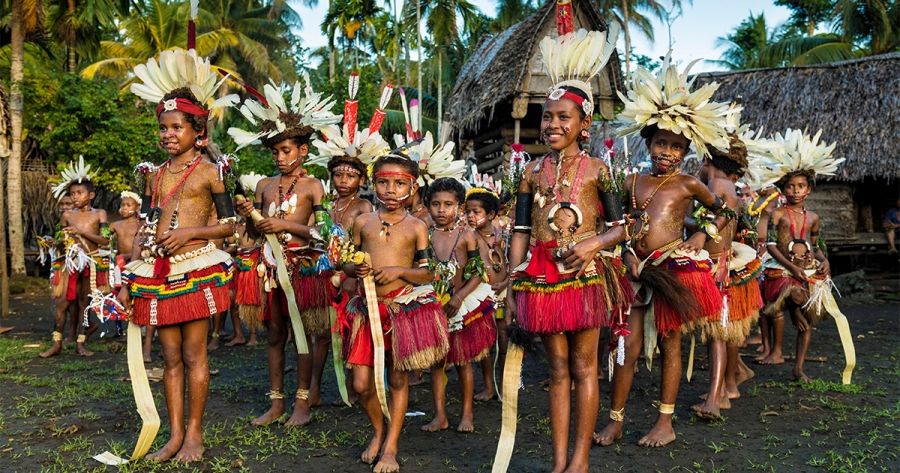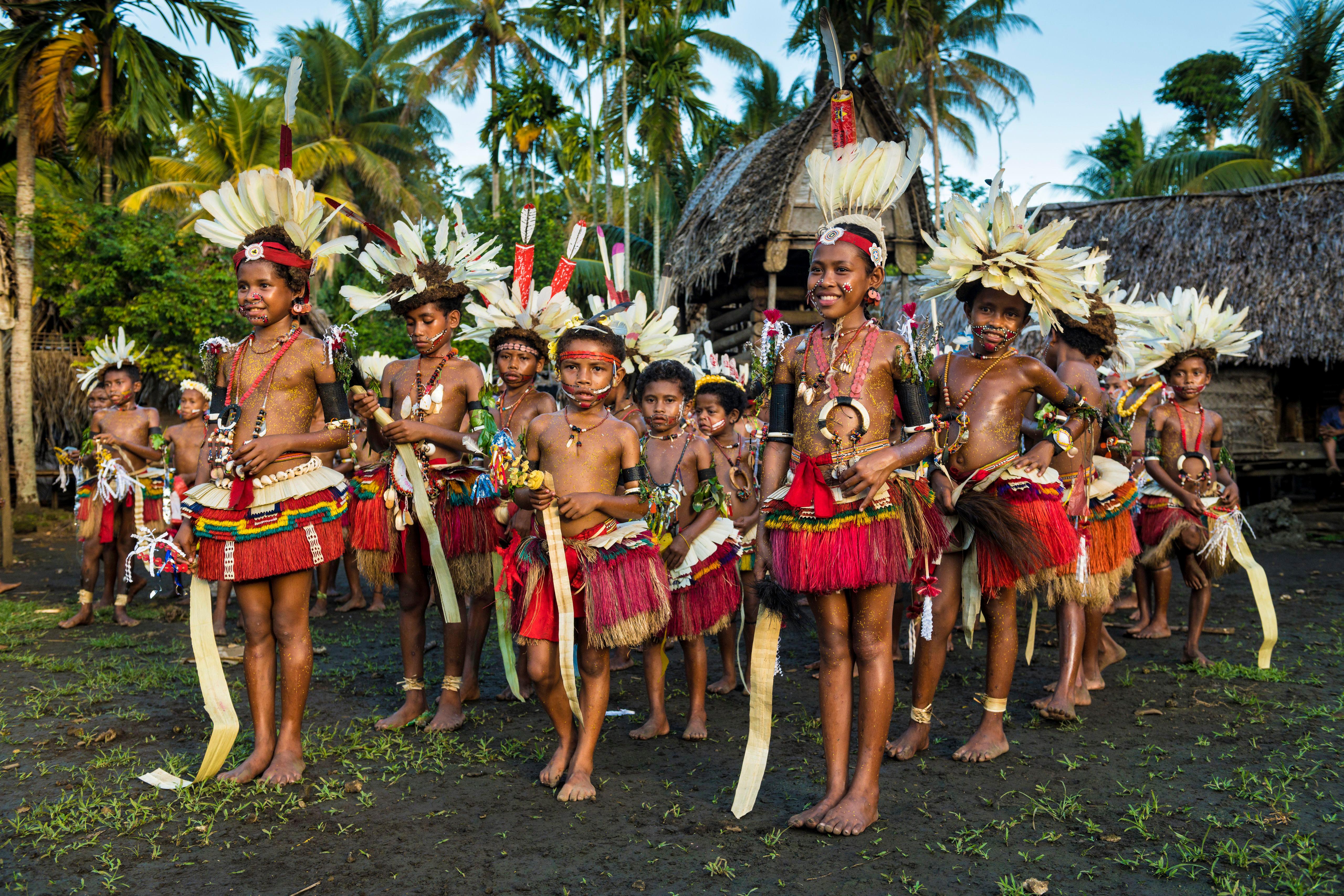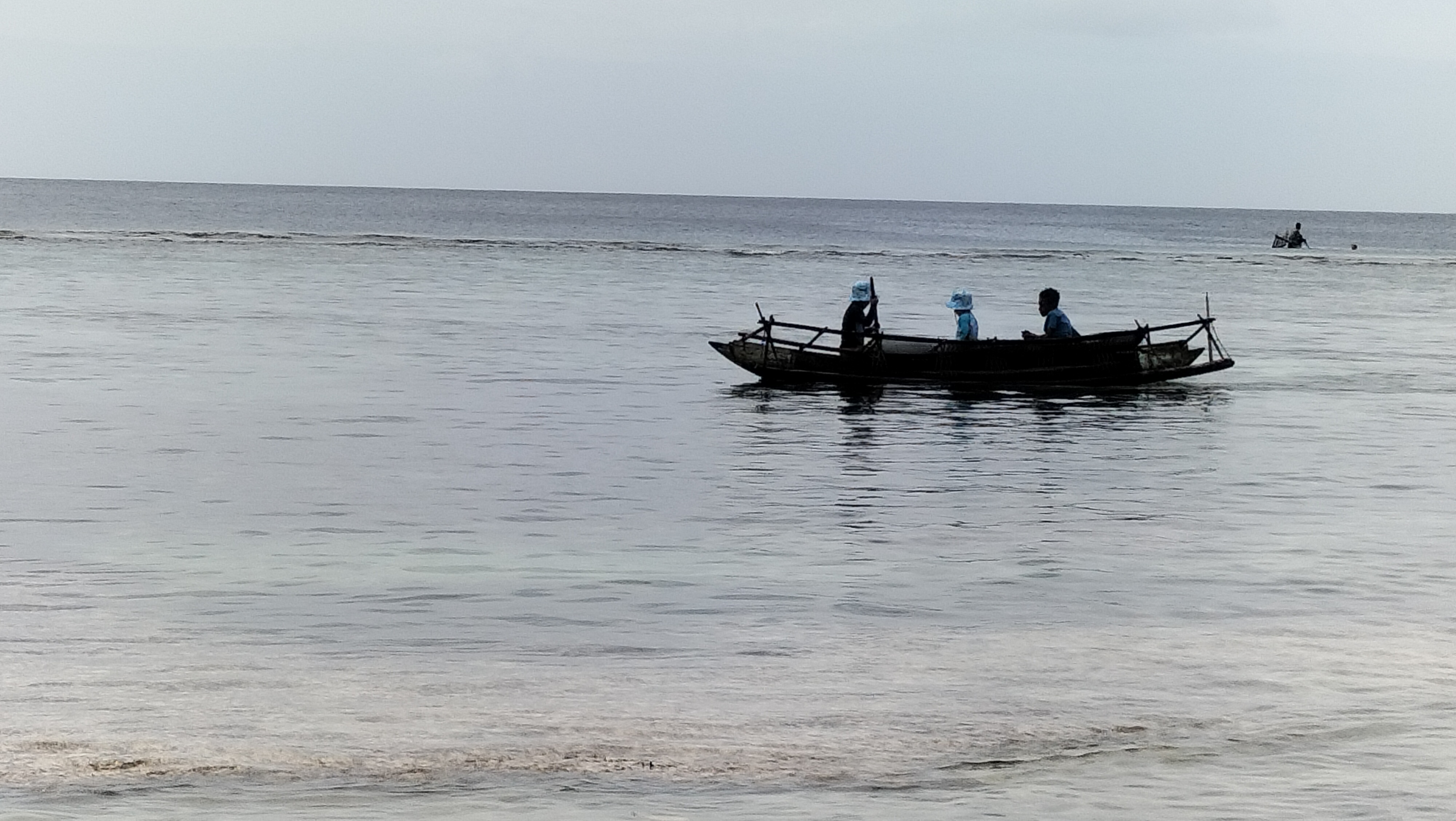
- Free Article: No
- Contents Category: Commentary
- Custom Article Title: Drinking from coconuts: When Australians weren’t scared of Papua New Guinea
- Review Article: No
- Article Title: Drinking from coconuts
- Article Subtitle: When Australians weren’t scared of Papua New Guinea
- Online Only: No
- Custom Highlight Text:
Everyone gets at least one lucky break in life, or so the saying goes. For me, one of the luckiest was a childhood spent in Papua New Guinea (PNG). In 1966, my father left Melbourne for what was then the Territory of Papua and New Guinea, prompted by curiosity and the opportunity to work on kuru, a fatal neurogenerative disease affecting the Fore people of the Eastern Highlands. My mother joined him two years later, in 1968, and in PNG they remained until 1990.
- Featured Image (400px * 250px):
.png)
- Alt Tag (Featured Image): Children performing the Wosi Mwaya dance at the Milamala festival Kiriwina, 2018 (Hemis/Alamy)
I don’t know what Dad expected to find when he went to PNG, but he soon felt at home. He loved the country, and he loved its people. Dad was Australian, and there was much he cherished about this land – the bush, gum trees, book and antique shops in country towns – but from March 1966, when he first arrived in the tiny, remote hamlet of Okapa, his heart was forever in PNG. Dad died in 2014. Though not a man for last wishes, which I suspect were too indulgent for his practical and unassuming ways, in his final days he did mention one hope: that his ashes be scattered in PNG. Last year, we fulfilled that hope. Dad’s remains dance along the currents of PNG’s beautiful, tropical waters.
My interest in PNG, stimulated by the joys of my childhood, is with me still. Now I get to exercise that interest as a historian, a bonus of which is that I regularly have reason to travel to the country. One especially memorable trip was in 2017, when I spent a week in Salamaua with two PNG colleagues. The village of Salamaua, on an isthmus that juts into the Huon Gulf, was a site of great strategic significance to the Allies and the Japanese in the fight for PNG during World War II. We were there to record Salamauan histories of the war, as part of a wider project to capture and preserve PNG memories of the conflict. The people of Salamaua were warm and gracious hosts. My colleagues and I slept on the beach in a hut built specially for us. We ate greens from the village gardens and fish caught fresh each day, and drank from coconuts that kids plucked from the palm tops. The bounty of Salamauan land and sea was shared without hesitation.
When our Salamauan stay ended, I flew to Port Moresby and boarded a flight for Australia. As passengers shuffled onto the Qantas aircraft, the cabin manager reassured us that we would depart for Brisbane as soon as possible, the suggestion being that everyone aboard had visited PNG under sufferance and was desperate to leave. Although a throwaway line, his words irked me, especially after enjoying such kindness at Salamaua. On his reading, PNG was a country fit only to be endured and escaped. I wonder what the Papua New Guineans on the aircraft made of his words.
It wasn’t always so. On my desk are copies of the quarterly journal New Guinea, first published in 1965 under the editorship of Peter Hastings. Sixty years on, the writing still sparkles, the journal indispensable reading for anyone interested in PNG history. Flicking through one edition recently, I came across an advertisement for TAA. Under the catchphrase ‘New improved Friendship connections!’, the ad trumpeted an increase in the number of flights between Australia and Port Moresby. Banal advertising copy perhaps, but an indication also of a time when Australians knew more of PNG; a time when Australians weren’t scared of the country.
Australian engagement with PNG was always likely to decline after PNG gained its independence from Australian rule in 1975. And fair enough too, for the affairs of the new nation were its own and not those of the former colonial power. The sadness is that the decline in engagement with our nearest neighbour seems to have been accompanied by a decline in knowledge and understanding; Australians look to PNG far less than they once did. The late Hank Nelson observed that Australian interest in PNG, measured in terms of scholarship, fell sharply after a highpoint in the 1960s and 1970s, even as Australians came to learn more about Kokoda and other World War II battles in PNG.
 Children performing the Wosi Mwaya dance at the Milamala festival Kiriwina, 2018 (Hemis/Alamy)
Children performing the Wosi Mwaya dance at the Milamala festival Kiriwina, 2018 (Hemis/Alamy)
There was a time when the Australian media reported regularly on the complexities and wonders of PNG. Now when we hear of PNG, the reference often is to a natural disaster, such as the recent landslide in the Enga province, or to crime and endemic violence. Delegations of Australian politicians and officials visit PNG and offer platitudes about shared histories and mutual wartime sacrifice, though the visits seem to owe less to friendship than to security concerns, especially about Chinese influence in the country. PNG has deep and manifold problems, and these must be reported, but it seems to me that the lens through which we view the country has become relentlessly negative, not to mention covetous, on the part of Australian governments. Perhaps it is naïve to think that official Australian engagement with PNG could be without self-interest, but it is dispiriting nonetheless. We hear little of what PNG does achieve and are increasingly blind to what we might learn from the country and its people.
In September 2025, PNG will celebrate fifty years of independence. Before independence, few Papua New Guineans had experience of pulling the levers of government, nor was there any particular sense of national unity. And yet, against the odds imposed by astonishing cultural and linguistic diversity and rugged terrain, Papua New Guineans made a country; a proud country that endures. Throughout this period, parliamentary democracy has continued unbroken: tested certainly, but unbroken. When I hear Australians talk dismissively of PNG politics and its characters, I reply that over the past fifteen years the door to the prime minister’s office in Port Moresby has spun less frequently than the corresponding door in Canberra. Are we in a position to judge others for political bastardry and corruption?
In August this year, I was invited to deliver lectures on a P&O cruise ship visiting PNG. Our first stop was at Alotau, on the south-eastern tip of the mainland. Alotau is the capital of Milne Bay province. I assume that the reason for this stop was so that the ship’s predominantly Australian passengers might visit areas where Australian and Japanese forces fought in 1942. In Alotau is a memorial to members of the Allied forces who died in the battle of Milne Bay. Next to the memorial stand several information panels, funded by the Australian government. Australian money buys Australian words. The panels acknowledge the suffering that the people of Milne Bay endured, but through an Australian lens. In this telling, Papuans and New Guineans were loyal servants to the Allied cause, and grateful for the Australian victory. There is no mention that throughout the war Papuans and New Guineans also served the Japanese, nor that most Papuans and New Guineans desperately wanted the ‘white man’s war’ to go away. Anyone who has visited PNG will know that its roads and paths are dyed bright red by buai (betel nut) spit, and so it is in Alotau. Yet the area of the memorial is pristine, free of rubbish and any flash of red. In this demarcated pocket of Alotau is a piece of Australia, where Australians decide what Papua New Guineans should know about PNG history.
The ship called also at the Conflict Islands, named in the late nineteenth century after a British naval ship, and here too was evidence of Australian influence, though more benign than in Alotau. The Conflicts are twenty-one islands that make up a single coral atoll, a postcard-perfect destination about 130 kilometres east of Milne Bay. The islands are privately owned by Australian businessman Ian Gowrie-Smith, and are inhabited only by men and women on his payroll who entertain cruise ship visitors and oversee a conservation program for the turtles that come to the Conflicts to nest. The islands are home to green turtles and endangered hawksbill turtles. Almost all of the staff I saw were Papua New Guinean, and this and other evidence suggests that Gowrie-Smith is committed to local people and to supporting their economies. And yet, whatever good is produced by Gowrie-Smith’s custodianship, there is a tension here. In the islands, as at the Alotau memorial, there was a sense of separation from PNG, its people, and its vibrancy. How did it come to be that the permission of an Australian is needed to visit this wondrous piece of PNG? Much as I enjoyed exploring the Conflict Islands and snorkelling in the azure waters, I couldn’t escape the sense that this was PNG curated for Australian tastes. There are no buai stains in the Conflicts.
 Three boys in a canoe, Kiriwina (courtesy of the author)
Three boys in a canoe, Kiriwina (courtesy of the author)
In recent times, there has been talk of Gowrie-Smith selling the islands, a possibility that has attracted the attention of Canberra, which fears who that buyer might be and what that buyer might do. Under 1,000 kilometres separates the Conflicts from Australia, and the islands, tiny as they are, could accommodate a port and even multiple airstrips. The islands could, therefore, support the designs of an expansionist foreign power. Any sale of the islands would bring into question the future of the turtle conservation program and the employment it sustains, but there hasn’t been much talk of that, as Gowrie-Smith has lamented.
In the nineteenth century, the Germans and British played the game of colonies in PNG. Soon enough, Australians took the place of the British, then much later they were joined by other players, including China and Malaysia. Travelling through PNG can give the sense that the game continues and that, as in times past, Papua New Guineans aren’t necessarily welcome at the table. We now know less of the country, yet seem to grasp at it more.
Meanwhile, we risk missing its magic. As part of the cruise, the ship visited Kiriwina, the largest of the Trobriand Islands. After looking through the market, my wife and I took our boys, eight and six, to the beach to play in the shallows. A Kiriwina boy named Michael, about twelve, took them for a ride on his outrigger canoe. The dexterity and skill with which he handled the canoe told of a life spent on and in the water. In Australia, we would not allow our boys near the ocean accompanied only by another child, especially one unknown to us. At Kiriwina I had no hesitation; I knew they were safe with Michael. This is part of the lure of PNG: it stirs the blood by offering reminders about different ways of being, of intoxicating possibilities that modern Australian life can obscure. After the canoe expedition, our boys splashed around with children from Kiriwina. With the play was also talk: two Australian kids, and a bunch of Papua New Guinean kids, happily chattering away. Dad would have loved it.
This article is one of a series of ABR commentaries on cultural and political subjects being funded by the Copyright Agency’s Cultural Fund.


.png)
Comments powered by CComment